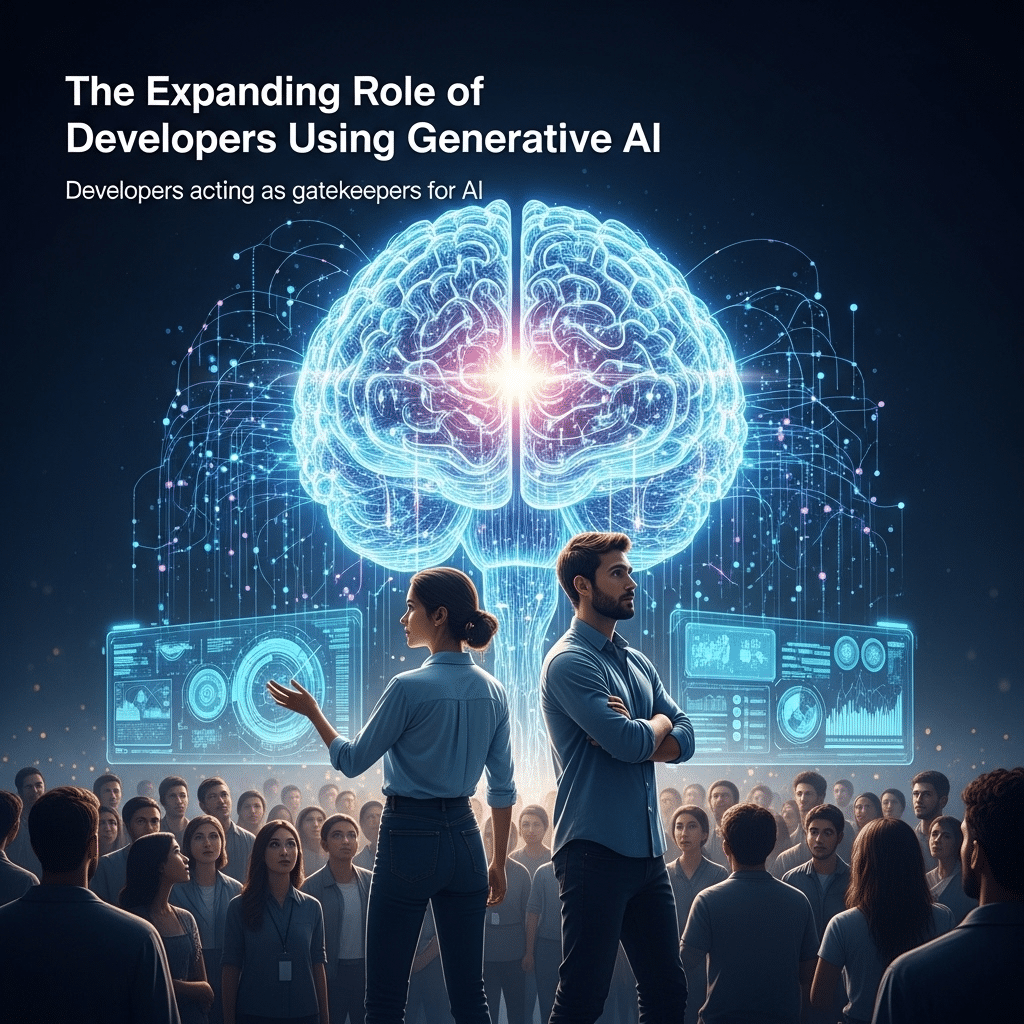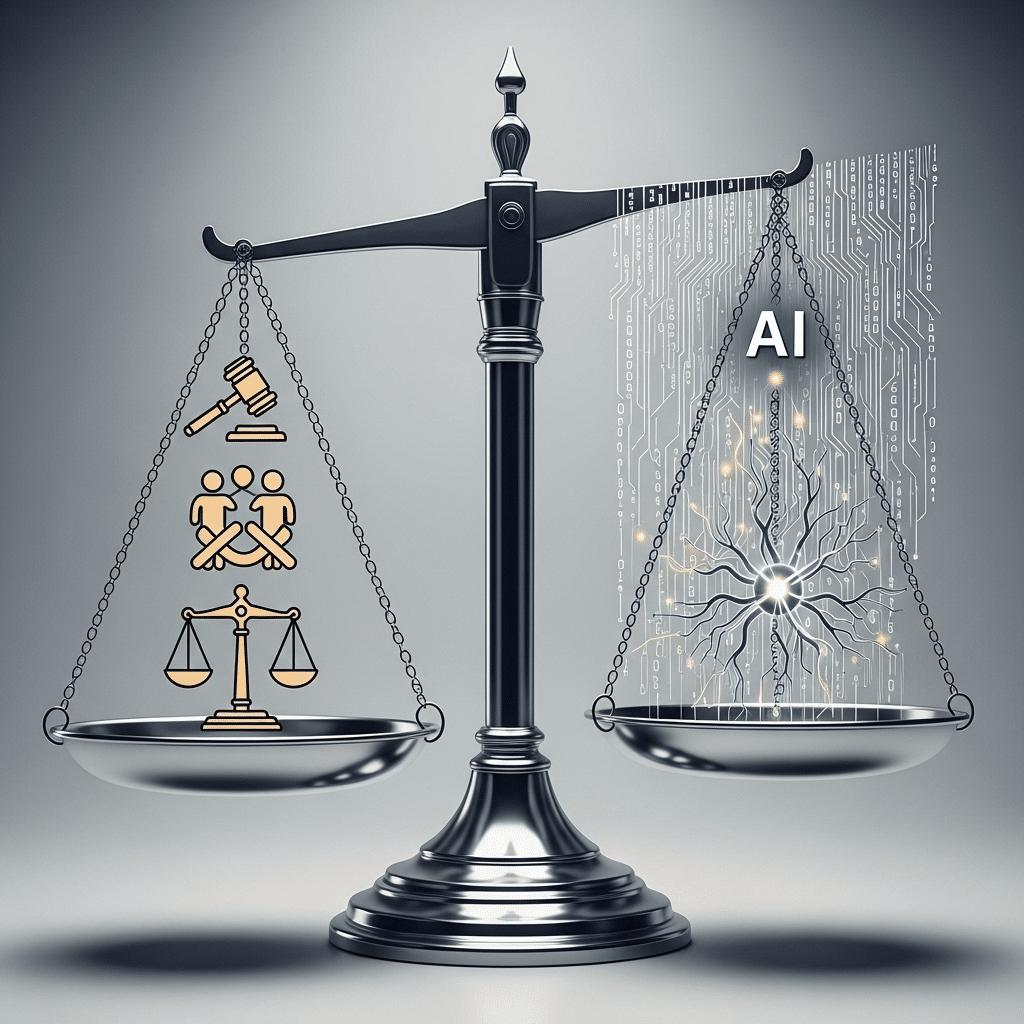
Table of Contents
Generative AI is transforming the world—one image, word, or song at a time. But with this powerful tool comes a critical question: what is the responsibility of developers using generative AI? Developers aren’t just writing code anymore; they’re shaping systems that influence millions. The responsibility lies heavy, and it’s time we unpack what that really means.
what is the responsibility of developers using generative ai
What is Generative AI?

Generative AI refers to systems that can create new content—be it text, images, video, code, or even music—based on patterns learned from data. These models don’t just retrieve information; they generate new outputs that mimic human creativity.
Real-World Applications
From chatbots to deepfake detection, generative AI is everywhere:
- Writing assistants (like ChatGPT)
- AI art generators (like DALL·E)
- Code generators (like GitHub Copilot)
- Music creators
- AI-based video generation tools
Examples of Tools
- ChatGPT for conversational tasks
- DALL·E for image generation
- MidJourney, Stable Diffusion, and more
The Growing Role of Developers
Developers don’t just build tools—they shape society through them. With generative AI, every decision from dataset choice to output filters holds immense power. Developers serve as the gatekeepers between raw technology and the end user.
Ethical Responsibilities
Avoiding Bias in AI Outputs
AI models can inherit bias from their training data. Developers must actively seek to:
- Identify harmful stereotypes
- Diversify training data
- Audit model outputs
Promoting Fairness and Inclusion
Fairness isn’t optional. Developers should:
- Ensure equal performance across different demographics
- Involve diverse perspectives in model testing
Respecting Intellectual Property
Pulling from copyrighted data can land you in legal trouble. Developers must:
- Use open-source or licensed content
- Attribute when necessary
- Prevent model misuse for plagiarism
Legal and Regulatory Compliance

Understanding AI-Related Laws
Laws around AI are evolving. Developers need to stay ahead of:
- Data protection regulations
- Algorithmic accountability requirements
GDPR and Data Privacy
Generative models can memorize sensitive information. Developers must:
- Avoid personal data in training
- Comply with user data rights
Compliance with Content Regulations
In some countries, even generated content is subject to media laws. Developers must consider:
- Censorship rules
- Hate speech policies
Transparency and Explainability
Making AI Understandable
Most users don’t know how AI works—and that’s dangerous. Developers should:
- Explain how outputs are generated
- Label AI-generated content clearly
Building Trust with Users
Transparency builds trust. Use model cards, documentation, and clear disclaimers to show users what’s under the hood.
Data Responsibility
Responsible Data Sourcing
Garbage in, garbage out. Developers should:
- Vet datasets for accuracy and ethics
- Avoid scraping private data without consent
Avoiding Copyrighted or Sensitive Material
Using protected works without permission? Big no. Instead:
- Choose public domain or Creative Commons sources
Managing Training Data Securely
Data breaches can be catastrophic. Follow:
- Encryption standards
- Anonymization practices
Preventing Harmful Outputs

Mitigating Misinformation
AI can invent facts. Developers must:
- Implement fact-checking mechanisms
- Allow users to flag false content
Content Moderation Strategies
Avoid generating:
- Violence
- Hate speech
- NSFW content
Build moderation tools or integrate existing filters.
Handling User Feedback
Feedback loops help models grow responsibly. Always:
- Collect feedback
- Update models accordingly
Continuous Monitoring and Evaluation
Updating Models Regularly
No model is perfect forever. Developers should:
- Patch vulnerabilities
- Tune outputs to new societal norms
Post-Deployment Accountability
Even after launch, developers are responsible. Monitor performance and keep refining the AI’s behavior.
Collaboration and Open Development
Sharing Research Responsibly
Transparency in research helps the whole community. Share:
- Findings
- Failures
- Bias issues
Contributing to Ethical AI Communities
Join groups like:
- Partnership on AI
- AI Now Institute
Be part of the movement toward responsible AI.
AI for Good
Using AI to Solve Global Problems
Generative AI can help:
- Educate underserved communities
- Visualize climate change impacts
- Translate underrepresented languages
Prioritizing Social Impact
Every build should answer: does this improve lives?
Responsibility to End Users
Designing with User Safety in Mind
Think beyond features. Think about consequences:
- Can users misuse this?
- Is it addictive?
Preventing Addiction or Overuse
Endless AI chats may seem fun, but mental health matters too. Add:
- Usage limits
- Mindful UX design
The Future of Developer Responsibility
Emerging Frameworks and Best Practices
As AI evolves, so do its ethics. Developers should stay updated with:
- IEEE AI Ethics Guidelines
- EU AI Act
- NIST AI Risk Management Framework
Responsibility is no longer a nice-to-have—it’s the job description.
Conclusion
To sum it up, developers using generative AI have an enormous responsibility—to users, to society, and to the future. This goes far beyond just coding models or fixing bugs. It’s about being intentional, ethical, and forward-thinking in every decision made. As the builders of this brave new AI-powered world, developers must lead with responsibility at the core.
FAQs
1. What is the main role of developers using generative AI?
To ensure ethical, legal, and safe use of AI systems while delivering useful, creative solutions to real-world problems.
2. How can developers avoid bias in AI?
By auditing training data, including diverse datasets, and regularly testing outputs across various demographics.
3. Are there laws for using generative AI responsibly?
Yes, including GDPR in Europe, the EU AI Act, and emerging global regulations.
4. Why is transparency important in AI systems?
It builds user trust, improves accountability, and helps users understand how content is generated.
5. Can generative AI be used for good?
Absolutely! It can be used in education, accessibility, healthcare, and environmental awareness if handled responsibly.
🔗 External DoFollow Links for the Article
- OpenAI – Responsible AI Development
➡️ https://openai.com/research
📌 Supports content on AI tools like ChatGPT and research behind responsible development.
- Partnership on AI – Best Practices for Responsible AI
➡️ https://www.partnershiponai.org/
📌 Backs points about ethical AI frameworks and global developer responsibilities.
- European Commission – AI Act Proposal
➡️ https://artificialintelligenceact.eu/
📌 Reference for legal compliance, especially in the EU.
- Google AI Principles
➡️ https://ai.google/responsibilities/responsible-ai-practices/
📌 Reinforces guidelines around fairness, transparency, and accountability.
- IBM – Trusted AI Principles
➡️ https://www.ibm.com/artificial-intelligence/trusted-ai
📌 Provides a tech leader’s perspective on responsible generative AI.
- Stanford HAI (Human-Centered AI)
➡️ https://hai.stanford.edu/
📌 Useful for referencing AI research, human-AI alignment, and education.
- NIST AI Risk Management Framework (US)
➡️ https://www.nist.gov/itl/ai-risk-management-framework
📌 Great for developers wanting to reduce AI harm and align with U.S. best practices.
- Harvard Business Review – Bias in AI
➡️ https://hbr.org/2022/04/how-to-reduce-bias-in-ai
📌 Helps support your section on ethical responsibilities like avoiding bias.